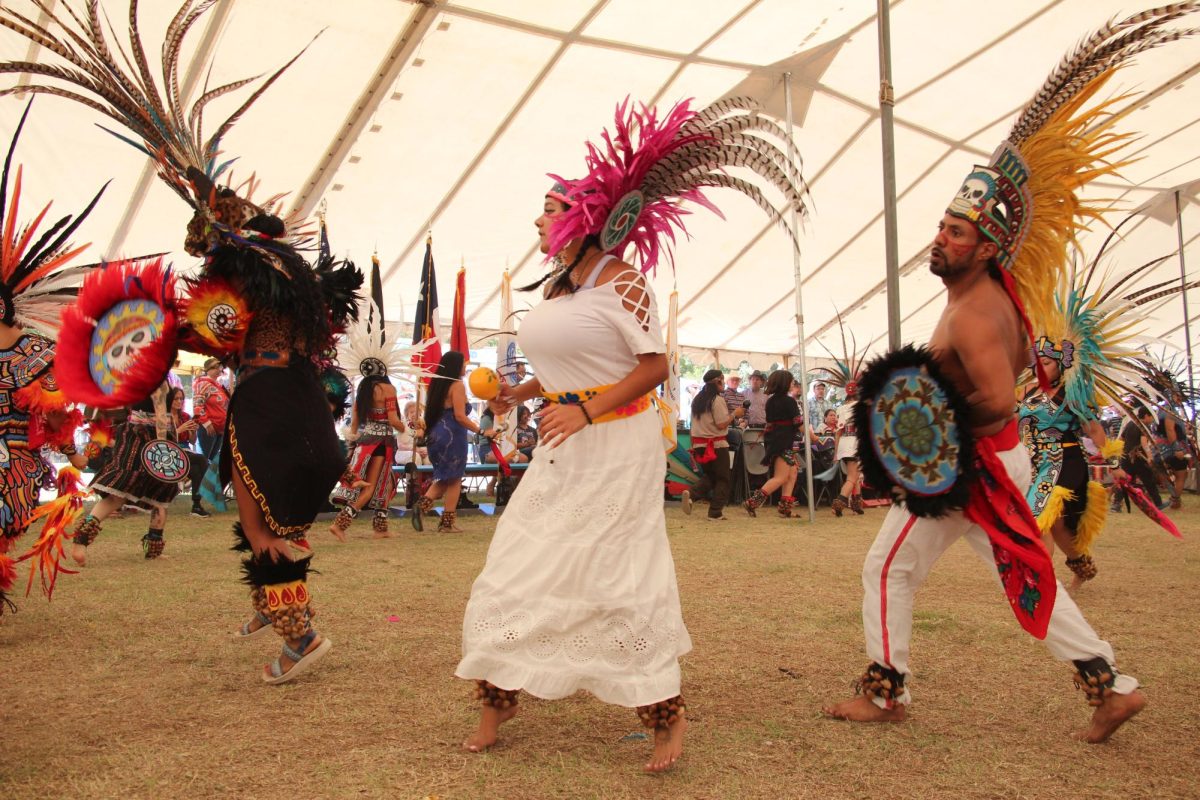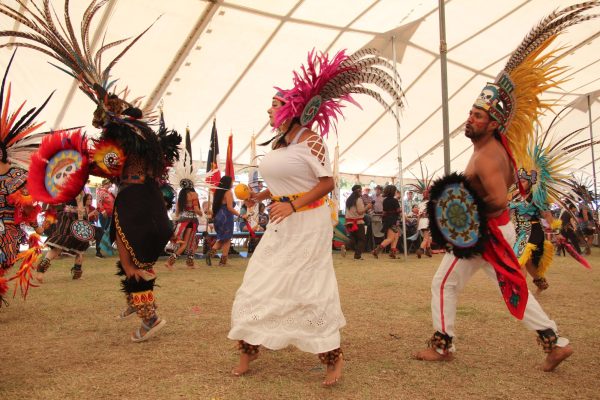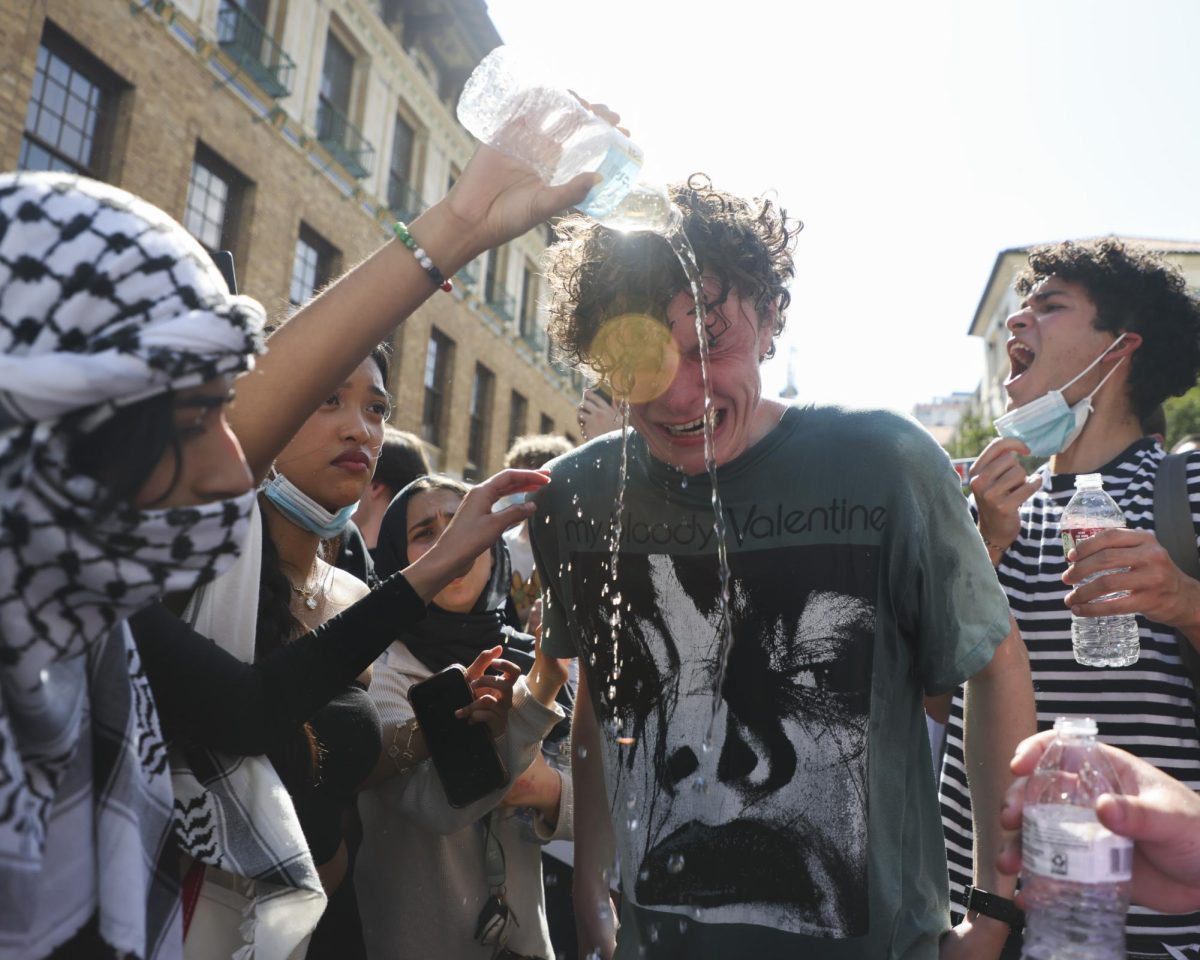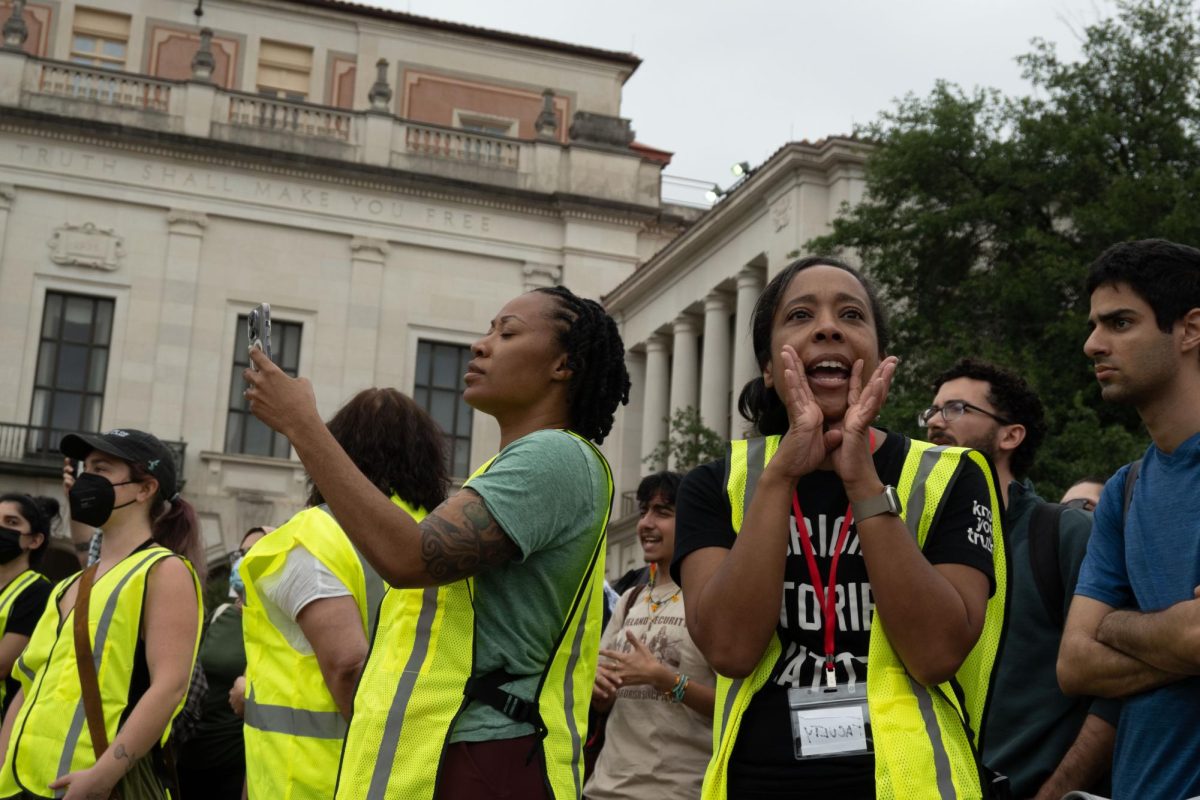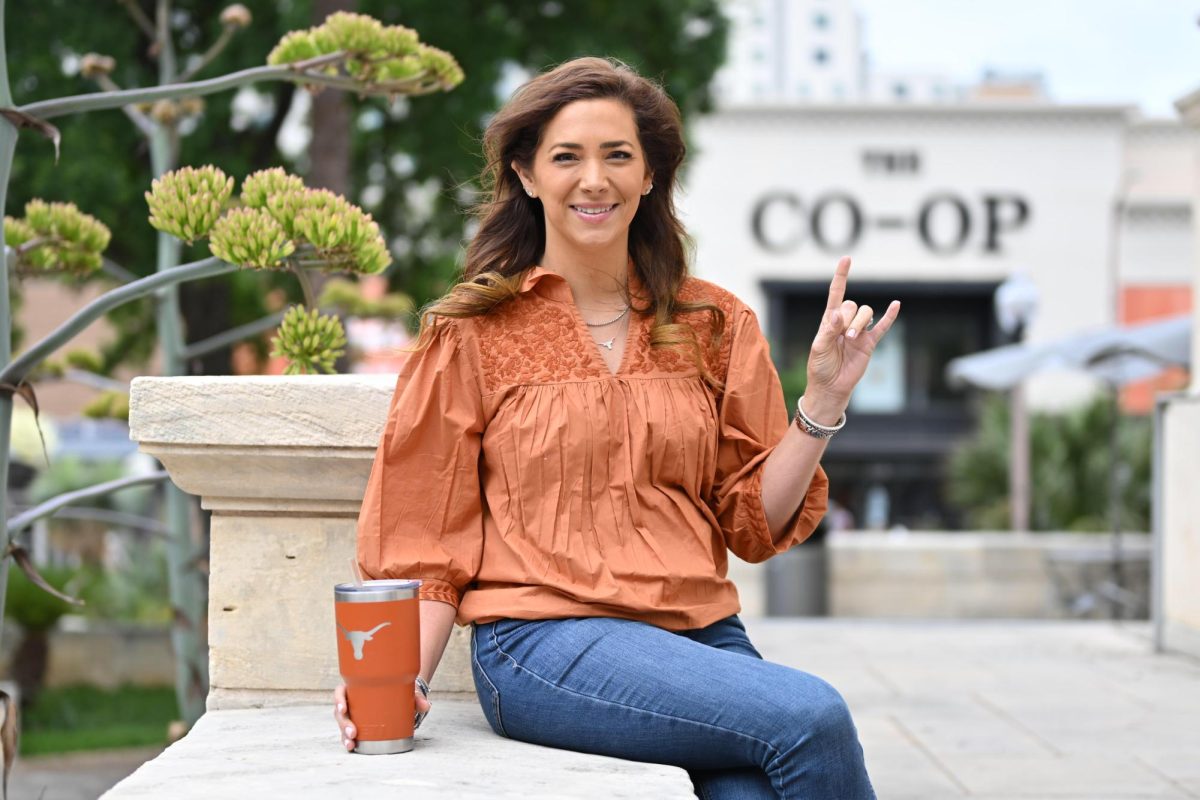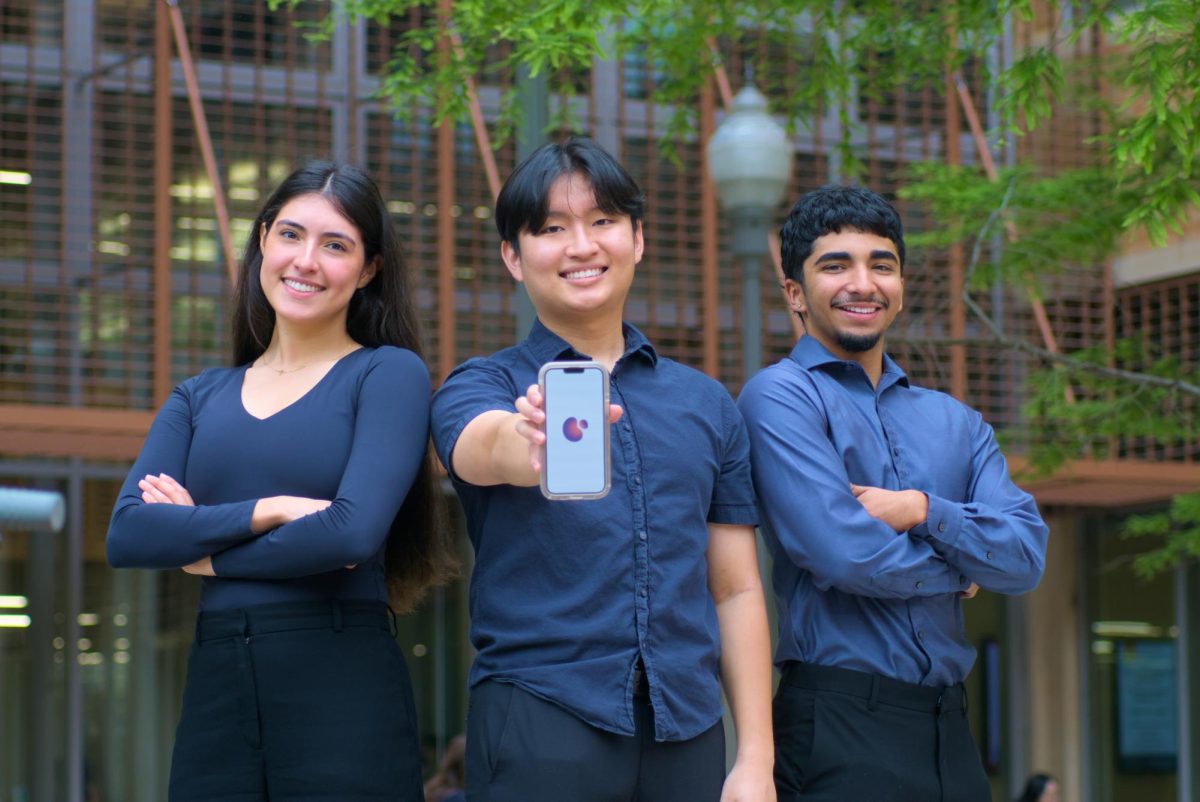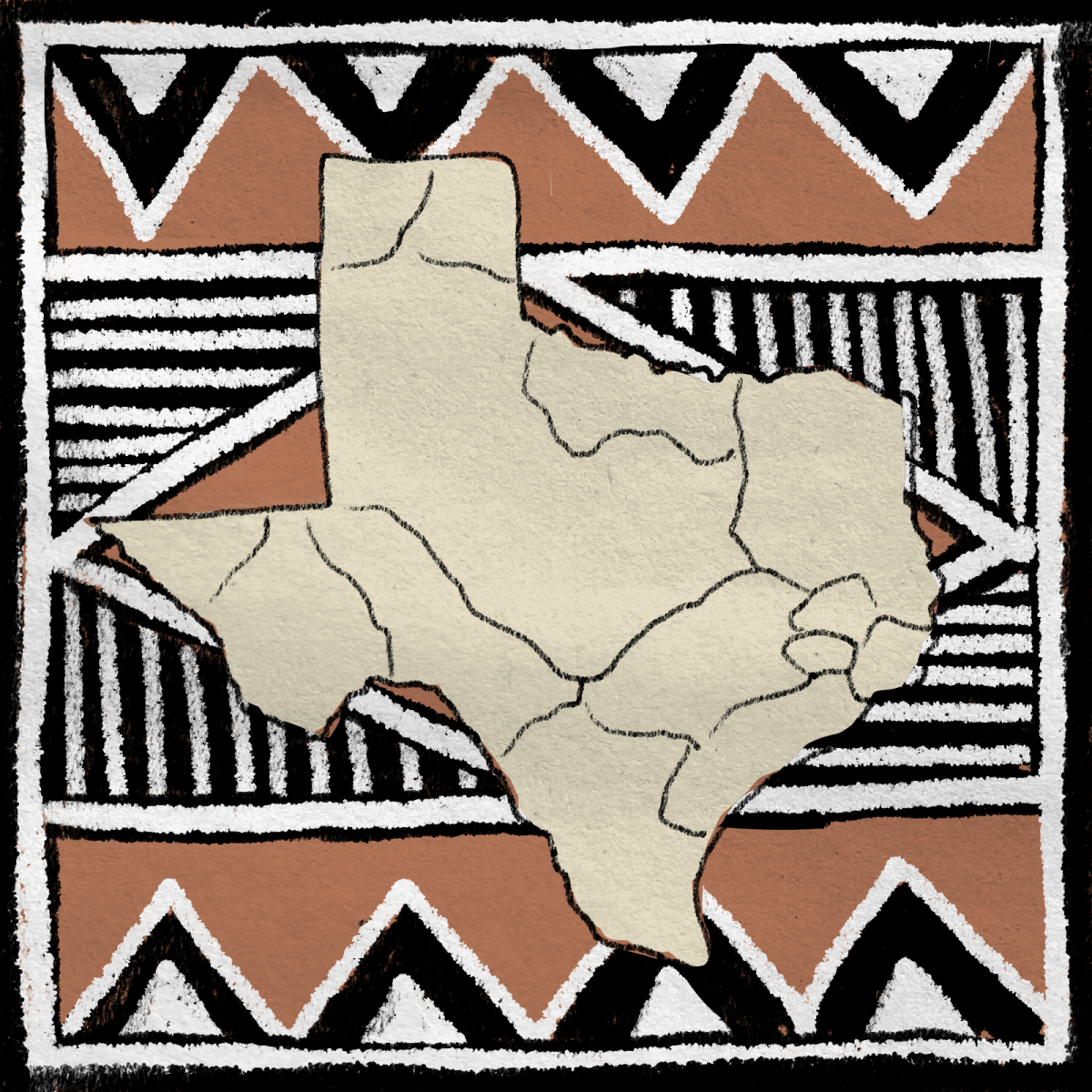In a vibrant whirl of colors and feathers, indigenous dancers move in time with steady, echoing drums and heartbeats synced in rhythm. For indigenous people, the music of the Powwow drum represents the heart, the womb and the moon, marking a meeting place of music, tradition and, above all, community.
Once a year, the Sacred Springs Powwow brings together indigenous creatives from across Texas to celebrate cross-cultural traditions. The event, hosted by the Indigenous Cultures Institute, takes place on the shore of Spring Lake, the oldest continually inhabited land in North America and a sacred site for the Coahuiltecan people.
“Just being in that space and hearing the music is a way of forming a community,” said Aaron Pyle, UT alumnus and co-chair of the Powwow.
Held over two days, Pyle said the Powwow boasts various Native American arts and crafts vendors selling traditional beadwork, traditional food, rugs and clothing. Most notably, the celebration features traditional dances such as the grass dance, which represents sneaking through the tall grass of the great plains, and the jingle dress dance, where bells on dresses represent prayers to the universe.
“Mexica Aztec dance speaks to my culture, and I’m able to feel a part of Mexico here in the heart of Texas,” said Xochimilo Murguia Vazquez, government and psychology junior and community engagement chair for UT’s Native American and Indigenous Collective.
Vazquez said that as someone with roots in the indigenous cultures of Southern Mexico, being a part of NAIC exposed them to different sides of the indigenous community.
“Powwows are more heavily influenced by Northern indigenous peoples,” Vazquez said. “It’s been great to see other interpretations of what it means to be indigenous.”
Marial Quezada, curriculum and instruction doctoral student and co-chair of the Indigenous Student People’s Association, also serves as Education Programs Manager for the Indigenous Cultures Institute. Quezada emphasizes the importance of passing the responsibility of carrying cultural traditions down to young people.
Quezada said that at the Powwow, UT student volunteers from NAIC and volunteers from the graduate NAIPA fulfill a variety of roles, from serving food to instructing children in indigenous art.
“The youth sharing their knowledge and the reclamation and revitalization of their indigeneity and their cultural practices, and learning the Coahuiltecan languages and singing and expressing it in that way at the Powwow is pretty special,” Quezada said.
Looking to the future, Quezada said the ICI hopes to further expand the reach of the Powwow and share the beauty of indigenous traditions.
“The power is here to represent that we’re still here,” Vazquez said. “We’re not leaving, we’re not gone, we’re still strong, we have a community to prove that.”




